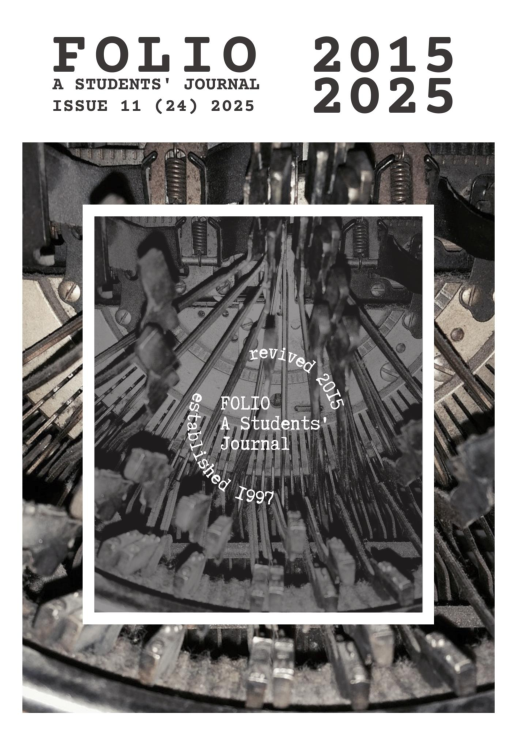
Issue #11 is here!
We are thrilled to present to you the 11th issue of Folio. A Students’ Journal – a volume that marks a special milestone, as it arrives exactly ten years after the journal’s reactivation in 2015. To celebrate, we invited three editors from that pivotal issue – Alicja (Kosim) Kitlasz, Aleksandra Szugajew, and Maja Gajek – to offer a glimpse into the early days of rebuilding the journal.
You may find issue 1 (14) 2015 here, and all other issues here.
Alongside the editors' insights, in this year’s collection of student essays, you will find a rich variety of topics across literature, culture, and translation. We investigate the evolution of literary and cultural traditions through the lens of Medea’s symbolic transformations. Seeking answers to the environmental crisis leads us to investigative poetry by Natalie Diaz and dg nanouk okpik, whose narratives unveil the aftermath of colonialism. Next, we take a closer look at William Burroughs’ “Wind Die. You Die. We Die” and the metafic-tional tools used by the author to obscure the distinction between fiction and reality.
As we move to culture, we invite you to engage with the essay exploring the unreliable narration in the movie Shutter Island and its effects on the audience’s experience. Further on, we move to comedy and its social respon-sibility with a thorough and insightful investigation into the satire of racial issues, as well as an exploration of the concept of pretty privilege in stand-up based on the example of Matt Rife’s career.
Turning to translation, we delve into Sillitoe’s Saturday Night and Sunday Morning, exploring the challenge of rendering dialect across languages and cultures, as well as a theatre-inspired interpretation of Heart of Darkness and its Polish translations. As always, we hope this issue will inspire you to read, reflect, and maybe even contribute your own work in the future. And if you are interested in shaping the journal behind the scenes, consider joining our editorial team, especially since next year marks another milestone for our journal – we will publish the 25th edition since its creation.
In the meantime, click on the cover and enjoy reading!


